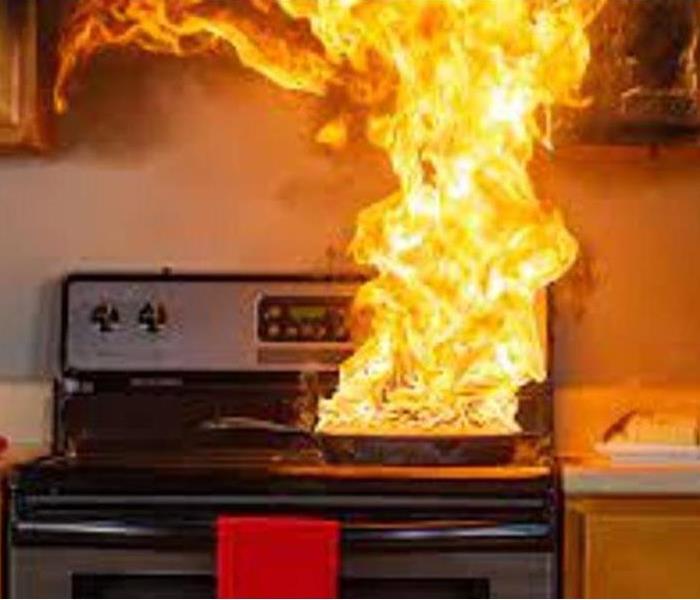Cooking Fires And The Potential Damages
10/6/2021 (Permalink)
Your kitchen is the heart of the home. Homework gets done, bills get paid, and pets get fed. So many great memories get made cooking in the kitchen- the smell of baking chocolate chip cookies, late night hot cocoa, leftover pizza for breakfast….
One of the household’s most basic and repeated tasks can also be one of the most dangerous. Kitchen fires are the most common types of household blazes; half of all residential fires start in the kitchen. Of these, most are triggered by cooking. According to NFPA.ORG, cooking equipment is responsible for 1 in 5 blazes and the leading cause of home fires. Two-thirds (66%) of home cooking fires start with the ignition of food or other cooking materials.
Cooking Appliances
Your stove and oven are two big potential fire sources; they generate heat with gas or electricity. Ranges or cook-tops are responsible for 58 percent of home cooking fires, ovens account for 16 percent. Grease is highly flammable, but so are paper, cloth, and wood–all often close to the cooking surfaces.
Many kitchen fires come from burned and scorched food in the pan. A dirty oven or stove top with accumulated grease and residue is another fire safety hazard.
Although they are convenient, microwaves can be dangerous if you heat flammable aluminum foil, Styrofoam or certain plastic containers. Almost all foods can ‘catch fire’ when improperly heated in the microwave (for example 10 minutes instead of 1 minute.) Toasters and toaster ovens can gather crumbs and grease, sometimes causing a fire.
Technical Malfunctions
Ovens can malfunction and start a fire, especially if they are old, not maintained properly or damaged in some way. Electric ovens have heating elements that can spark a blaze; gas models may develop leaks that can lead to explosions. When the switches and thermostats age, the oven may not turn off completely. Ensure that the appliance is serviced regularly, and immediately if the cooking temperature is erratic.
Lack of Cleaning
Of all the potential causes of an oven fire, this is perhaps the most avoidable; every year thousands of fires are triggered by greasy residue. A buildup of oils and other cooking byproducts, or even thick dust, can trigger an oven blaze. Clean your oven regularly, especially if you spill something or food boils over inside of it. Use only appropriate cleaning products. Check the internet for ideas using vinegar and baking soda for an eco-friendly option.
Safety reminders
- Unattended equipment is a factor in one-third (31%) of reported home cooking fires and over half (53%) of the associated deaths.
- Never pour water on a grease fire. Instead of running with the pan, turn off the stove, put the lid on the pan and let the fire die out from lack of oxygen. If you don’t happen to have a lid for the frying pan, slide another lid or a metal cookie sheet over the pan, being careful not to get your hands near the flames.
- If you see a fire in the oven, don’t whip open the oven door. Instead, turn off the oven and keep the door closed. If you can keep the fire from getting more oxygen, you’ve got the problem solved.
- Don’t use your oven for storage.





 24/7 Emergency Service
24/7 Emergency Service
